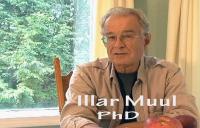ILLAR MUUL PhD
PRESIDENT & FOUNDER
Integrated Conservation Research, Inc.
The previous seven articles sought to provide some hope to resolve challenges in trying to save the elephants. These were written in response to the excellent analysis of these challenges presented in thee National Geographic Magazine (NGM), in the October 2012 issue.
In the VII’th article, I described the unforeseen consequences of international NGO’s trying to stop traditional practices, such as harvesting “bush meat”, and groups dedicated to trying to save each endangered species individually. We need to deal with conservation issues in an integrated manner, dealing with habitats, land use, economics, political factors, interest groups, and mainly the local people. They are often the victims, rather than the perpetrators of the problems.
During colonial times so much ivory was “extracted” from Africa that the price became low enough to use ivory for piano keys. Foreign traders became rich, but local people remained “poor”. The NGM described periodic attempts to sell ivory legally to compete with illegal sales by driving down the price. This was hoped to reduce incentives for poaching by lowering “market value”. But, “hope” is not a strategy. Little, if any, of the proceeds from the sales benefitted the local people who co-exist with the elephants.
A recent article in SCIENCE (“Legal Trade of Africa’s Rhino Horns”, 1 March 2013, page 1038) does present a strategy for conservation of rhinos. This kind of economic approach to the problem is unacceptable to many, if not most, of the mainstream conservationists. The fate of rhino is even more dire than that of elephants. Debate will continue while numbers of both continue to diminish. Industrialized agricultural development will continue to reduce areas with ecosystems suitable for support of these and other endangered species of animals and plants that would support them in the future.
But, other unintended consequences emerge as “development” progresses. A friend of mine worked in Africa many years doing medical research. As a pathologist, he observed that when people moved from the rural areas to urban areas and changed their life-style and diets, to include mostly processed foods (industrialized agriculture), their rates of colon cancer equaled those of people in industrialized countries. Their relatives left behind in the rural areas, eating traditional foods such as, roots and tubers, and bush meat, had hardly any cases of colon cancer.
I am not suggesting that people should remain in conditions we define as “poverty”. But, we could try to find ways for people who choose aspects of their traditional lives, to benefit more from the natural resources that belong to them. Consequently, they would become better stewards of these resources and conserve them for their future.
Every species has a life-span, including elephants, rhinos, and people. The maximum value of rhino horn and ivory would be at the natural end of the animals’ life-span. Legal sales of these and other animal and plant products would support the conservation of ecosystems that produce them in an ecologically and economically sustainable manner. The economic support of the local people would assure that they become stewards of these resources, because they become stakeholders.
Government managed national and regional parks would operate as they have in the past. These are the preserves of endangered species. However, in many areas the majority of the populations of endangered species exist outside the boundaries of such preserves. Creation of additional “preserves” would necessitate relocation of people, some of whom are already crowding or invading the borders of existing preserves. Our best option seems to be to “conserve” ecosystems on which endangered species and endangered cultures of people depend, on the basis of ecologically and economically sustainable development (UNESCO, Man and the Biosphere Program).
With a flood of new articles concerning “conservation”, some valuable information becomes buried. J. George Harrar (1961, Fed. Proc., 20:381) reported that “Although over 3000 plant species have been used for food and over 300 are widely grown, only about 12 furnish nearly 90% of the world’s food”. A similar ratio likely applies to animal products. In the economically “depressed” areas of the tropics, local knowledge about the value of local species becomes devalued and eventually lost in the face of industrialized agriculture promoted by international agencies for products for export. Profits from those are mostly external and do little to lift local people out of poverty. An excellent and detailed strategy to develop research and practical knowledge in tropical countries was published by H. David Thurston (1969, BioScience, 19 (1):29). Little of this has been fully applied to date, despite huge expenditures and growth of international agencies. One of the giants of tropical botany, F. Raymond Fosberg (1970, BioScience, 20(14):793) pointed out “….that certain areas are uninhabited or sparsely populated (in the tropics) because there is a lack of the requirements needed for support of human populations”. And further, “soil colloids are inadequate to retain minerals from fertilizers as reserves”.
Yet, for centuries, people managed to survive in areas of the tropics where industrialized agriculture is not profitable. We need to take a very hard look at these ecosystems and recover the information about the local use of animal and plant products. With research and genetic development the yields can be improved (see previous articles, e.g., red jungle fowl and chickens) to better support the local human populations and the endangered wildlife. Agroforestry has been attempted, with little gain. But, “agroecosystems” (defined earlier) have been found to be very productive in the context local use, as well as, export. In tropical ecosystems with enormous biodiversity it does not seem logical to depend on just a few products. Professor Wu, Z.Y. (1989, International Symposium on Man-made Communities in the Tropics. Haikou, Hainan Island, China) said “….since the tropical rainforests produce more biomass and have more rapid turnover than any other terrestrial community, then attempts in agriculture (agroecosystems) in the wet tropics should, in as much as possible, emulate the structure, complexity, and ecological dynamics of these forests for maximal production”. The same would apply to the savannahs of Africa where rainfall is less and more seasonal, but where productivity is also enormous.
The key seems to be: use what is there wisely (ecologically sustainably) and share the resources within the ecosystem, enhancing elements of it where possible, within a long-term strategy to serve the people and the endangered wildlife.
Editor’s Note:
A fund has been set up by:

958 Broadview Avenue Toronto Ontario M4K 2R6
phone (416) 465-4659 or toll-free 1-866-844-3828
fax (416) 465-8442
Estonian World Review INC 129690
Illar Muul, PhD
President & Founder
Integrated Conservation Research, Inc.
Web site: www.incores.org
Email: illar@incores.org; illar.muu@gmail.com























